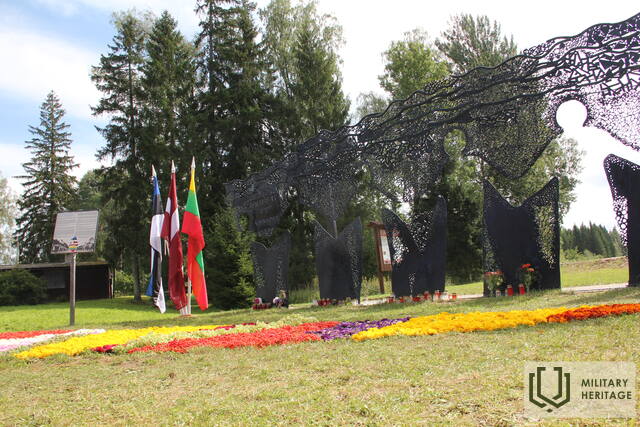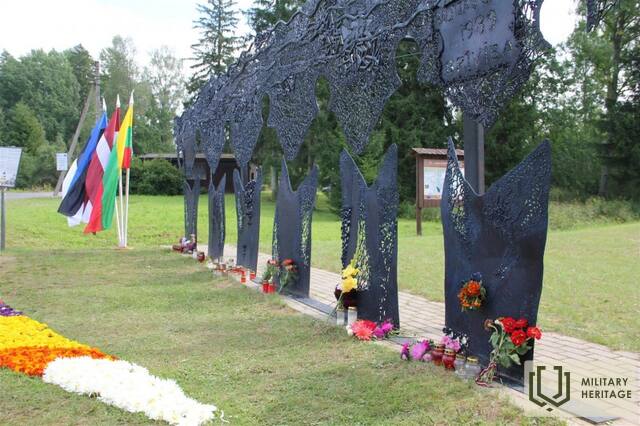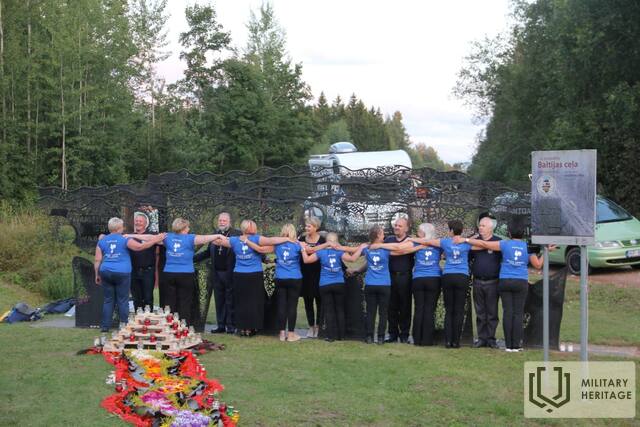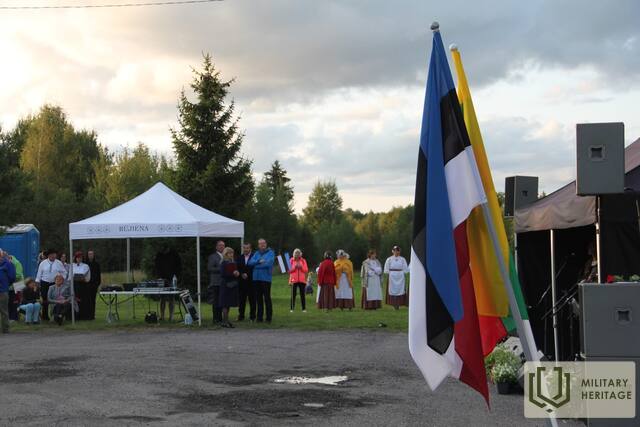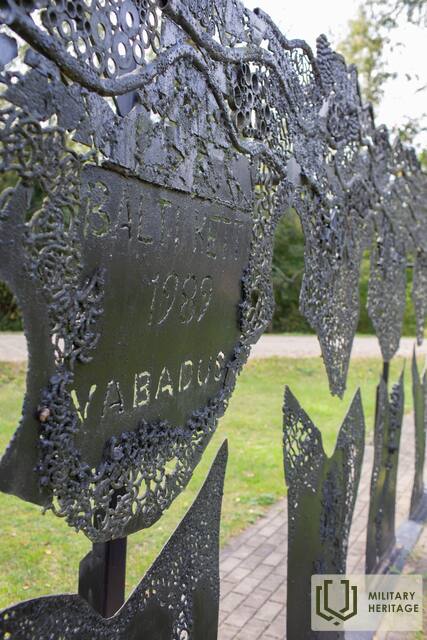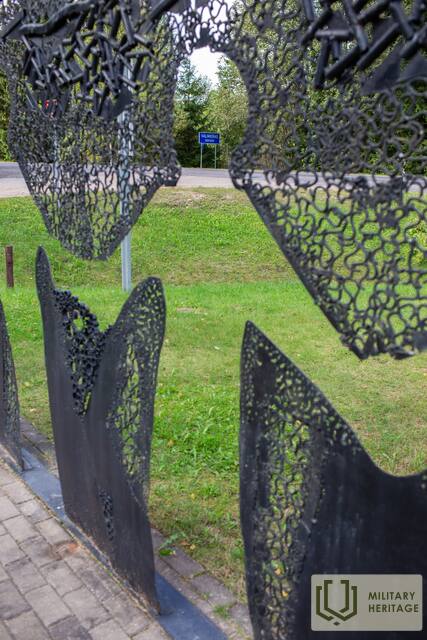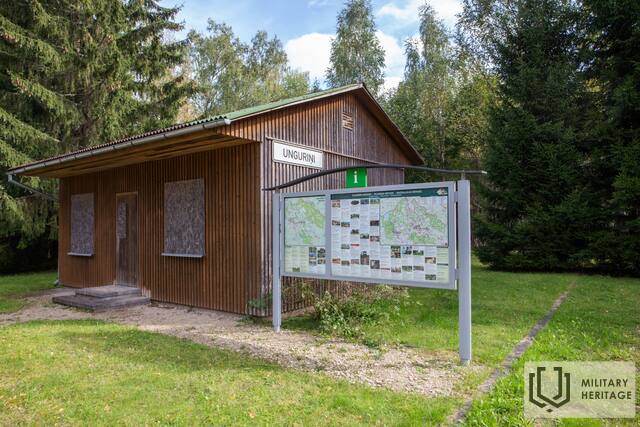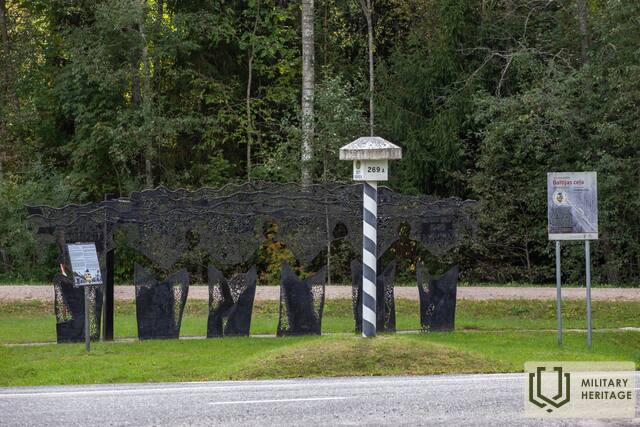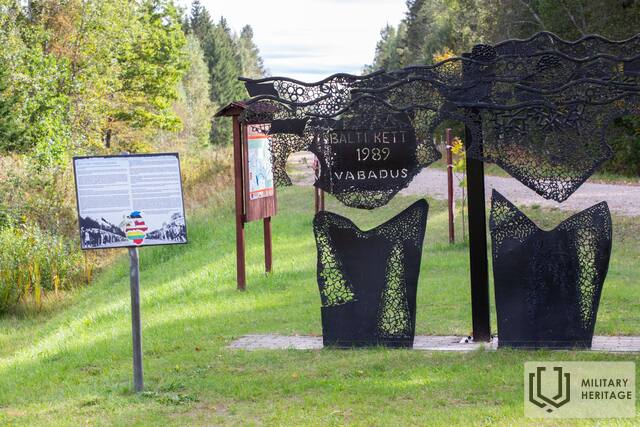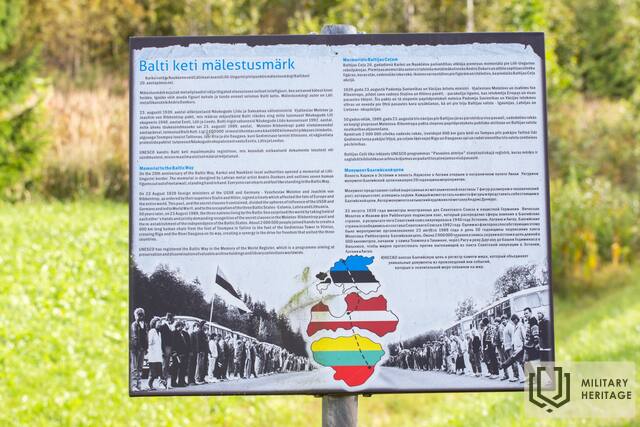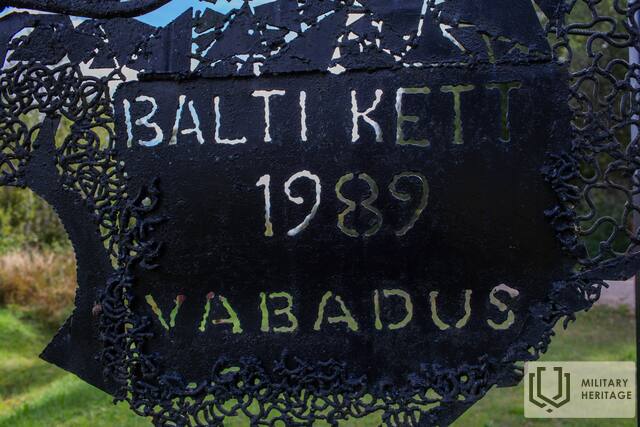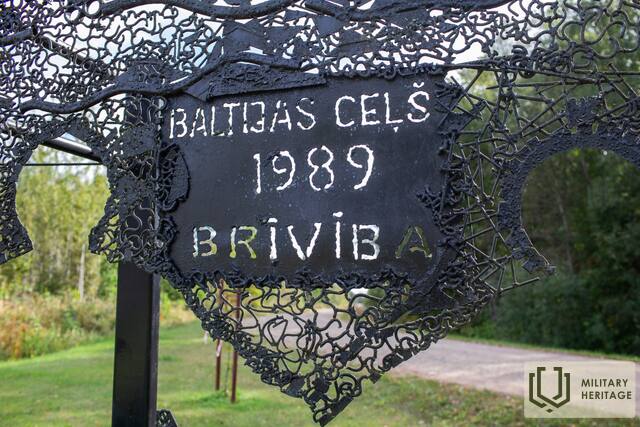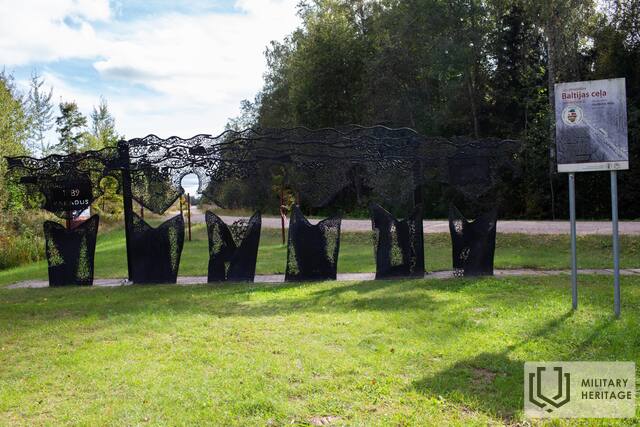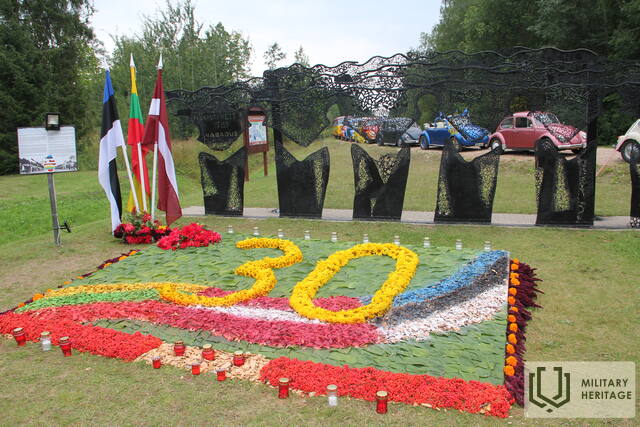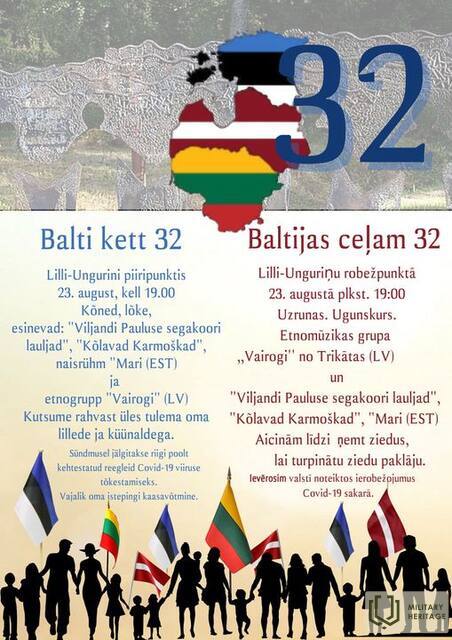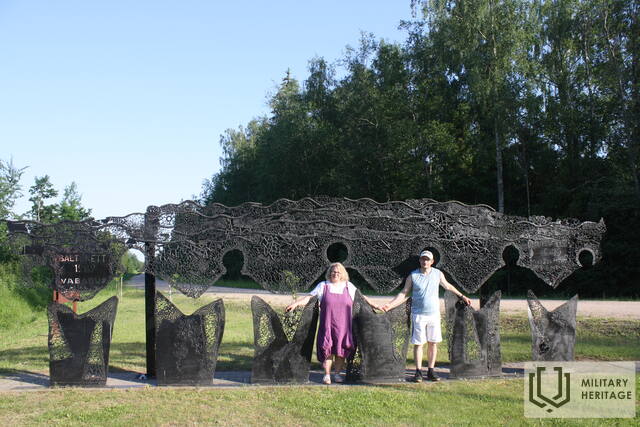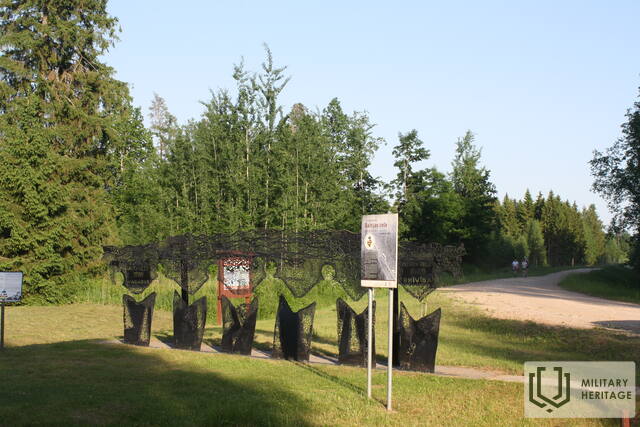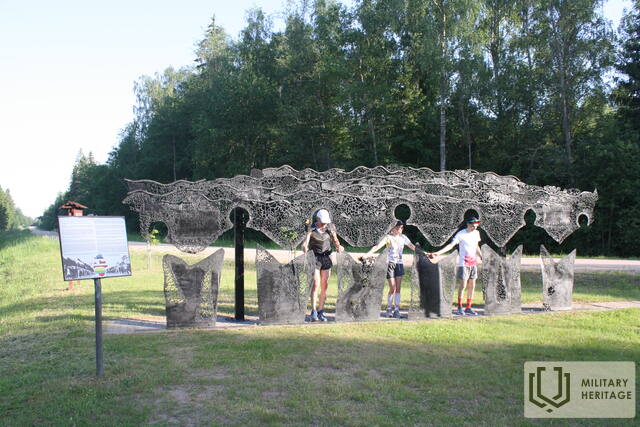Sculpture dedicated to the Baltic Way Memorial site

 165
165


Located at the Unguriņi-Lilli border crossing between Latvia and Estonia.
In the spring of 2009, the municipality of Ķoņi parish, whose territory borders Estonia, in collaboration with metal artist Andris Dukurs, created a sculpture dedicated to the twentieth anniversary of the "Baltic Road".
A nine-meter-long and two-and-a-half-meter-high sculpture with human silhouettes, where you can stand and hold hands in the empty places of the human silhouettes. The idea of the sculpture allows you to expand the dimension of time, and not only remember the chain of living people of 1989, but also gives you the opportunity to become a part of the "Baltic Way" at any time together with the sculpture.
Video about the creation of the sculpture.
The Baltic Way was a unique action not only in the Baltics, but also on a European and even global scale. Never before had the residents of three countries united in a living chain of participants, connecting the capitals of the countries – Vilnius, Riga and Tallinn. The historic event took place on the evening of August 23, 1989, it united about 2 million people. Its purpose was to draw attention and recall 50-year-old events – the conclusion of the Ribbentrop-Molotov Pact. As a result, the two superpowers of that time – Germany and the USSR – redistributed spheres of influence in Europe before the next world war, but the Baltic states lost their independence.
The approximately 600 km long chain of participants in Latvia marked the Baltic Way from Bauska to Riga, further to Sigulda, Cēsis, Valmiera and Rūjiena.
Used sources and references:
https://www.delfi.lv/novados/rujienas-novads/zinas/ka-rujiena-tapa-baltijas-celam-veltita-skulptura.d?id=43582297
https://www.celotajs.lv/lv/e/story/view/baltijas_cels/ff808181580af35f01580b3709dd0002?7
http://www.biblioteka.valmiera.lv/sites/default/files/Buklets_Baltijas_celam_25.pdf




